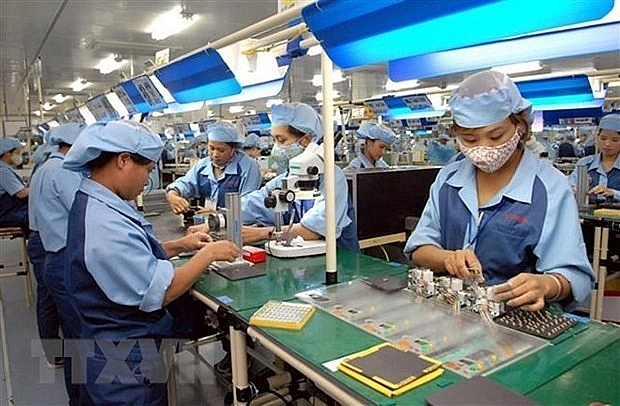EVFTA paves way for high-quality FDI flows from Europe to Vietnam
 |
| Illustrative photo (Source: VNA) |
Slated to come into effect on August 1, 2020, the agreement will also help Vietnam improve its position in global supply chains and create more added value, he said.
Under the deal, he expects Vietnam’s GDP to increase 2-3 percent in the first five years of implementation, 4.5-5.3 percent in the subsequent five years, and 7.0-7.7 percent in the five years to follow.
The Ministry of Planning and Investment estimated prior to the COVID-19 outbreak that, thanks to the EVFTA, Vietnam’s export revenue to the EU would expand about 20 percent this year, 42.7 percent in 2025, and 44.37 percent in 2030, primarily vehicles and transportation equipment, machinery, spare parts, phones and electronic components, pharmaceuticals, garments and textiles, and leather and footwear.
However, he added, figures from the General Department of Vietnam Customs show that exports to the EU from January to May were down 9.68 percent year-on-year.
Export value may therefore rise just 5 percent this year but higher levels will be posted from 2021 onwards.
The EU has committed to providing Vietnam with the highest-ever tax incentives, Thanh said, with up to 85 percent of tariff lines on Vietnamese goods cut to zero percent as soon as the agreement takes effect, with tariffs on most of the remaining goods eliminated after seven years.
New added value will be created for any party aware of new global trends post-COVID-19, puts forth business strategies, and develops its economy sustainably, the Trade Counsellor emphasised.
He also pointed to the challenges ahead, such as strict regulations, standards, and technical barriers set by the EU, and suggested Vietnamese companies satisfy the demand of European consumers in taste, packaging, and food safety while scaling up production, stepping up cooperation, and ensuring transparency.
He said Vietnam needs to act fast to optimise the opportunities generated by the agreement, as the EU is yet to conclude negotiations over FTAs with Thailand and Indonesia.
Thanh also warned of changes in the post-COVID-19 period when major Western European countries restore domestic supply chains to ease reliance on goods from Asia.
Given this, Vietnam needs to find its own path, he said, suggesting it cut the processing of low value added goods.
According to the Trade Counsellor, Vietnam can optimise the agreement to promote the export of certain products to Italy, such as electronic motors, phones and spare parts, honey, footwear, garments and textiles, face masks, pharmaceuticals, machinery, equipment, wooden items, and agro-fishery products, especially rice.
He affirmed that the commercial affairs office of the Vietnamese Embassy in Italy stands ready to act as a bridge for trade between the two countries.
What the stars mean:
★ Poor ★ ★ Promising ★★★ Good ★★★★ Very good ★★★★★ Exceptional
Related Contents
Latest News
More News
- Businesses ramp up production as year-end orders surge (December 30, 2025 | 10:05)
- Vietjet chairwoman awarded Labour Hero title (December 29, 2025 | 13:06)
- How to unlock ESG value through green innovation (December 29, 2025 | 10:03)
- AI reshapes media and advertising industry (December 29, 2025 | 08:33)
- FPT and GELEX sign deal to develop blockchain tech for global markets (December 29, 2025 | 08:29)
- Vietnam’s GDP forecast to grow by 9 per cent in 2026 (December 29, 2025 | 08:29)
- Women entrepreneurs are key to Vietnam’s economic growth (December 29, 2025 | 08:00)
- Vietnam's top 500 value-creating enterprises announced (December 27, 2025 | 08:00)
- The PAN Group shaping a better future with ESG strategy (December 26, 2025 | 09:00)
- Masan Consumer officially lists on HSX, marking the next phase of value creation (December 25, 2025 | 13:20)

 Tag:
Tag:





















 Mobile Version
Mobile Version